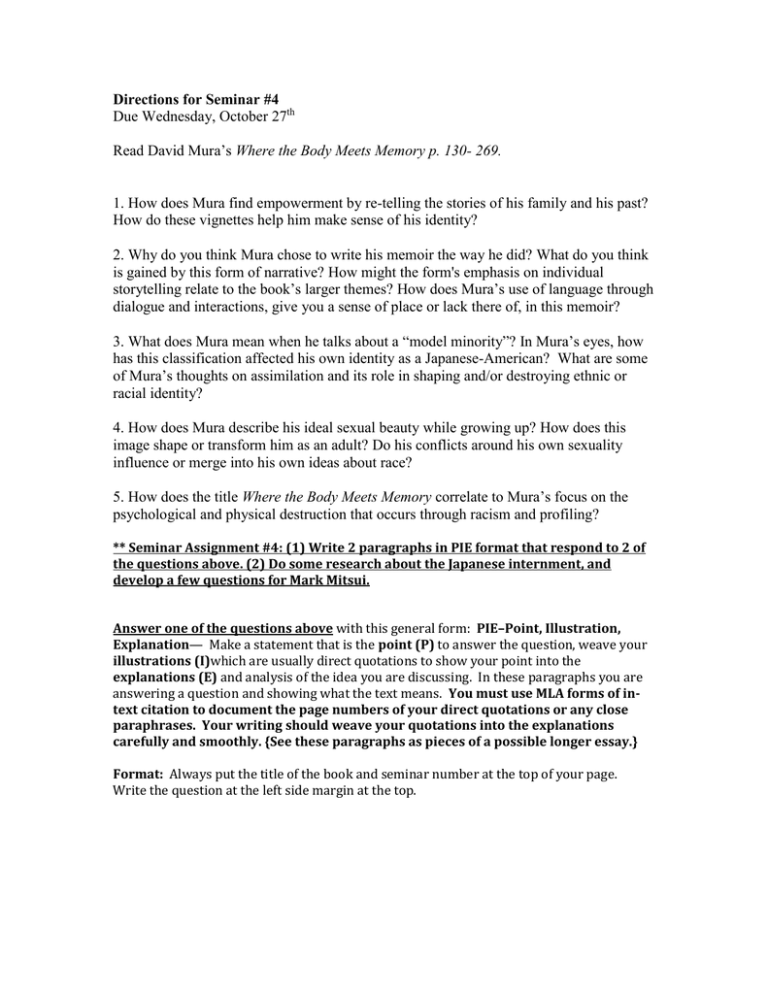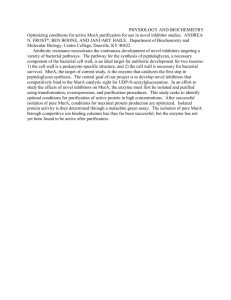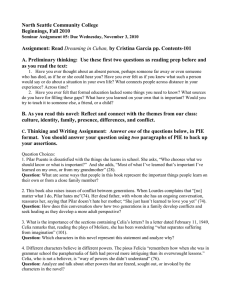Directions for Seminar #4 Due Wednesday, October 27
advertisement

Directions for Seminar #4
Due Wednesday, October 27th
Read David Mura’s Where the Body Meets Memory p. 130- 269.
1. How does Mura find empowerment by re-telling the stories of his family and his past?
How do these vignettes help him make sense of his identity?
2. Why do you think Mura chose to write his memoir the way he did? What do you think
is gained by this form of narrative? How might the form's emphasis on individual
storytelling relate to the book’s larger themes? How does Mura’s use of language through
dialogue and interactions, give you a sense of place or lack there of, in this memoir?
3. What does Mura mean when he talks about a “model minority”? In Mura’s eyes, how
has this classification affected his own identity as a Japanese-American? What are some
of Mura’s thoughts on assimilation and its role in shaping and/or destroying ethnic or
racial identity?
4. How does Mura describe his ideal sexual beauty while growing up? How does this
image shape or transform him as an adult? Do his conflicts around his own sexuality
influence or merge into his own ideas about race?
5. How does the title Where the Body Meets Memory correlate to Mura’s focus on the
psychological and physical destruction that occurs through racism and profiling?
** Seminar Assignment #4: (1) Write 2 paragraphs in PIE format that respond to 2 of
the questions above. (2) Do some research about the Japanese internment, and
develop a few questions for Mark Mitsui.
Answer one of the questions above with this general form: PIE–Point, Illustration,
Explanation— Make a statement that is the point (P) to answer the question, weave your
illustrations (I)which are usually direct quotations to show your point into the
explanations (E) and analysis of the idea you are discussing. In these paragraphs you are
answering a question and showing what the text means. You must use MLA forms of intext citation to document the page numbers of your direct quotations or any close
paraphrases. Your writing should weave your quotations into the explanations
carefully and smoothly. {See these paragraphs as pieces of a possible longer essay.}
Format: Always put the title of the book and seminar number at the top of your page.
Write the question at the left side margin at the top.
SEMINAR RUBRIC FOR EVALUATION OF SEMINAR PAPERS:
CONTENT AND IDEAS:
__________________ 15
POINTS
Answering a question with PIE (Point/Illustration/Example) paragraphs
Making statements that analyze and illustrate with direct quotations or close
paraphrases how the text answers the questions
Explanations and explications of the question or ideas
Evidence of understanding what the text says, what it means, and why it is
important.
VOICE/REFLECTION/RESPONSE:
___________________ 5
POINTS
Reflection/writer’s reader response to the text
Experience of reading and connections to the themes of our class:
COMMUNICATION ACROSS CULTURES/MEMORY/FGIURATIVE-LITERARY
LANGUAGE/RACE/IDENTITY/ROOTS
FORMAT AND EDITING AND PROOFREADING:
POINTS
Following Assignment Directions
Using MLA in-text citation correctly
Editing and proofreading
____________________ 5
[23-25=A]
PASSING
BELOW 17=NOT
[20-22=B]
[17-19=C]


